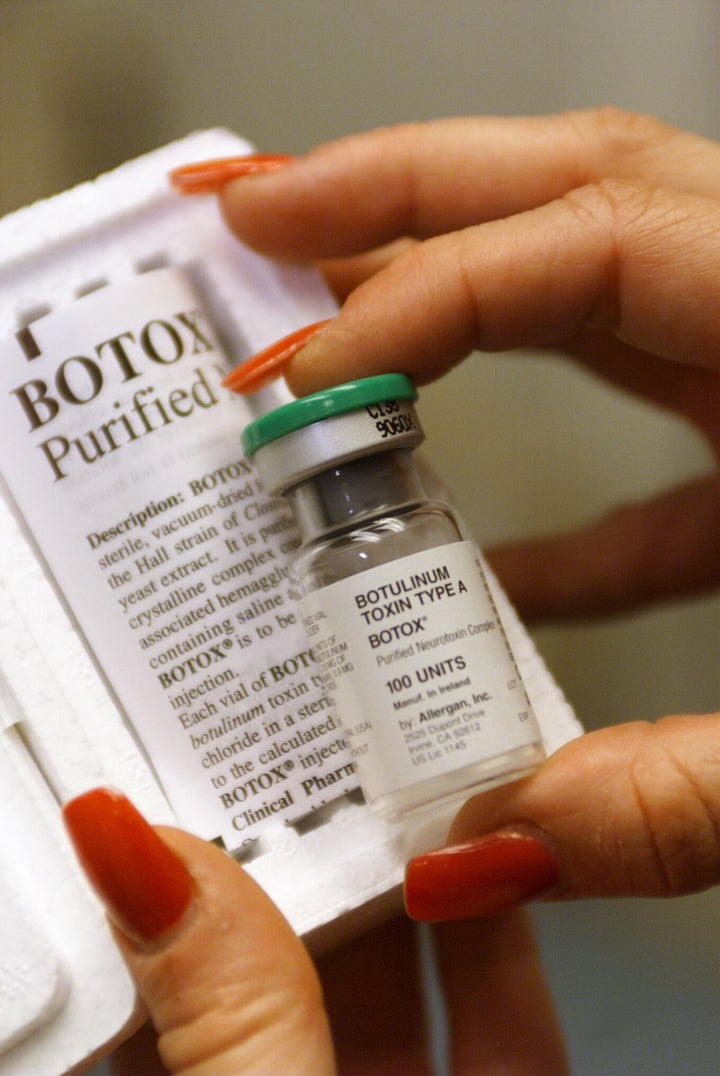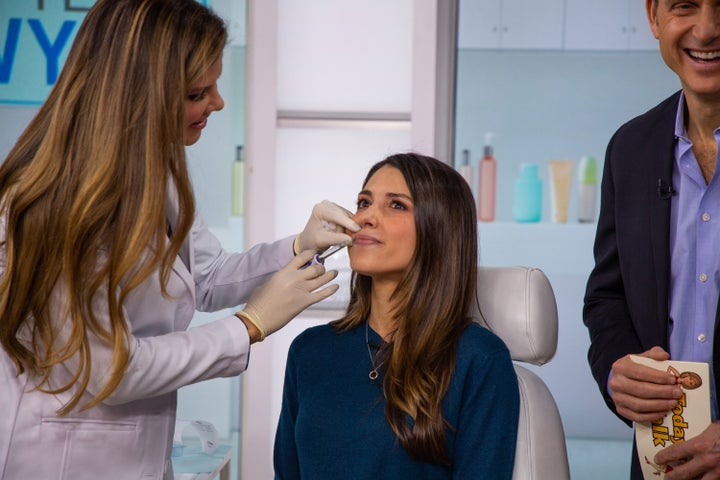You’re absolutely justified if you have a LOT of questions. Here, experts answer all of them.
After spending months working from home, many people are looking to freshen up their look before returning to the office. While some changes ― like haircuts or brow tints ― don’t require much research, others can seem a little more daunting. For those individuals looking to appear more youthful and relaxed by getting rid of fine lines and wrinkles, Botox has been an increasingly popular option during the pandemic.
Although visiting a doctor’s office and dealing with needles can seem intimidating, getting Botox is actually a safe and routine procedure. But you’re absolutely justified in having a lot of questions. We’ve asked the experts what you need to know for your first experience with Botox. (For the purpose of this article, we’re using the term “Botox” to refer to botulinum toxin in general, although it is in fact one of many brand names. Others include Dysport and Xeomin.)
First, you need to understand what exactly Botox is and does.
Botox, which is often confused with fillers, will not give you full lips or cheeks. Rather, it’ll smooth out lines on your face by temporarily paralyzing the muscles that cause wrinkles to form.
Strangely enough, it’s produced from the same toxin that causes botulism. So how exactly does this work as a beauty treatment that banishes wrinkles? Cosmetic dermatologist Dr. Peterson Pierre, who specializes in Botox procedures, explained: “The signal from the nerve to the muscle telling it to flex is blocked by Botox, thereby relaxing the muscle and improving lines and wrinkles.”
A provider who specializes in cosmetic procedures can use Botox to banish a variety of fine lines and wrinkles, such as the lines between the brows known as the “elevens,” the forehead and crow’s feet. But wrinkles are not the only thing Botox can help with cosmetically.
“It can also slim the face if your jaw muscles are overdeveloped, provide a lip flip so that more of the pink part of the lip will show, and works great for gummy smiles,” Pierre said. It can provide a nonsurgical eyebrow lift as well.
The cost depends on how much you get injected, but also your provider.
Many providers price Botox by units ― most vials contain 50 or 100 units, and the number of units you will need varies depending on your needs and which area you are getting done. Larger areas like the forehead and “elevens” will require around 40 units total, for example, while smaller areas like the crow’s feet will take around 24 units for both sides.

The cost of Botox varies depending on location and provider. On average, prices can range from $10 to $20 per unit. This means the 40 units for the forehead area will cost from $400 to $800 and the crow’s feet could be priced around $240 to $480. If this price seems steep, keep in mind that many medspas run discounts for first-time patients and on holidays.
The most common side effects are low-risk.
While injecting a neurotoxin into your face sounds dicey, the risks from Botox are generally low. As with any type of medical procedure, some people may experience side effects, such pain at the injection site, nausea, flu-like symptoms or headache.
“There have not been any serious cases of infection, pain or any sort of reaction to this procedure so far,” said Dr. Raffi Hovsepian, a board-certified plastic and reconstructive surgeon based in Beverly Hills.
Instagram influencer Whitney Buha recently gained attention for sharing the results of her botched Botox injection on Instagram, which caused severe eye drooping. But hers wasn’t a common experience.
“Whitney had Botox injected into her eyebrows and the injector hit the wrong spot, which led to an overly droopy eyelid and eyebrow,” said Dr. Gary Motykie, a board-certified plastic surgeon in Beverly Hills. “Her photos are pretty wild, but a case like Whitney’s is relatively rare — especially if you’re going to an accredited facility and provider.”
“The good news about Botox is that the results of ‘bad Botox’ are always temporary and will typically resolve within several months after injection,” he added.
Here’s what to do (and not to do) before your appointment.
There is not much to do to prepare for your appointment. Going in with clean skin is helpful, but the practice will likely have wipes to help you out if you forget. Also, keep a list of your medications handy, as some may interact with the Botox.
Avoid taking any medications that could thin your blood, such as ibuprofen or aspirin, three days before the procedure. (If you need pain medicine before the procedure, try Tylenol.) Also avoid fish oil, vitamin E, ginkgo biloba and garlic for for three days before.
It’s suggested you try to avoid drinking alcohol for a few days before the procedure, as that could decrease potential bruising. (Alcohol causes our blood vessels to expand from increased blood flow, which leads to a higher chance of bruising.)
You shouldn’t feel more than a small pinch.
If you’re afraid of the pain that could come from the procedure, don’t stress too much. Botox needles are generally small, keeping the pain minimal. There may be slight pinching during the procedure and pain at the injection site afterward, but nothing is long-term.
“If you’re in a lot of pain, find a new injector,” Pierre said.
There are a few activities you should avoid after the procedure.
The procedure will take around 20 minutes to an hour, depending on the area and injector. You can even go to work right afterward.
If you do decide to go home, don’t lie down for four hours, as this could spread the toxin to other areas of your face and encourage bruising. Bruising at the injection site can happen even if you don’t lie down, but the chances are small. Avoid drinking alcohol and being in the heat for 24 hours after the procedure to reduce your chances of bruising even further. If you bruise easily, arnica gel has been found to help.

You should also wait 24 hours to work out, as the increased blood flow can dilute the effects of Botox. Be sure not to massage or touch the area for a day, as this can spread the Botox into unwanted areas ― this includes abstaining from facial treatments like exfoliating scrubs, which would inadvertently massage the area.
Here’s how long Botox should last.
Unfortunately, your fine lines won’t disappear immediately after the procedure. Initial changes aren’t even seen until at least 48 hours after the injection, as it takes up to seven days for the toxin to fully affect the muscles in your face. The full results of Botox are not typically seen until seven to 10 days after the procedure.
For most patients, results will last around four months.
You can’t undo your Botox.
If you hate your Botox, you’ll have to wait for the effects to wear off naturally. This is why it is so important to visit someone with the knowledge and experience to administer Botox correctly.
Make sure you find a legitimate provider. Here’s how.
“First things first, please get your injections in a medical setting,” Motykie said. “At-home Botox parties, or drive-through Botox stops, are a bad idea.”
There are some important things to consider when researching facilities to ensure you get the best experience and outcome. Consider the treatment approaches: Do you want a natural look or a frozen, unmoving look? It can be helpful to look at before-and-after photos to determine what your results could look like based on past patients. Also take into account reviews of facilities to see other’s experiences.
“Always do your homework and consider a licensed professional that has knowledge of optimal treatment patterns and adverse effects,“ Hovsepian advised.
With this knowledge in hand, you and your wrinkles can be relaxed when receiving Botox.
Credit: Source link